I have a certain power spectrum array saved as test, depending on a frequency array f.
This power spectrum generally looks like in the following figure

It is to be remarked that the above power spectrum stemms from a simulated time series.
What I want to do, in principle, is to fit a curve approaching the simulated power spectrum as shown below:

I know that the theoretical power spectrum can be defined as follows:
function ps_theo = ps_th(L,Uhub,f)
const = L/Uhub;
f_x = 6.*f.*(L/Uhub);
exp = 5/3;
ps_theo = (4*const)./((1 + f_x).^exp);
end
where L is a constant length scale, Uhub, a constant speed and f the frequency vector.
The question is: I don't know the value of 'L', therefore I was thinking of an optimized non-linear resolution by using lsqcurvefit.
I have been proceeding as follows:
xdata = f;
ydata = test;
Uhub = 10;
fit_func = @(L) ps_th(L,Uhub,f);
L_opt = lsqcurvefit(@fit_func,330.2,xdata,ydata)
which retrieves an error msg on the number of inputs variables for the fit_func function.
Would you mind to shed a light?